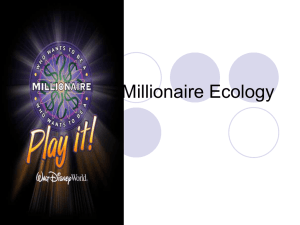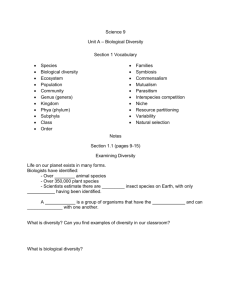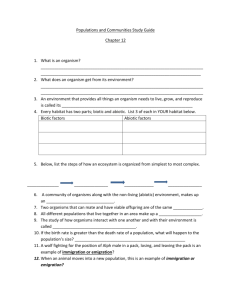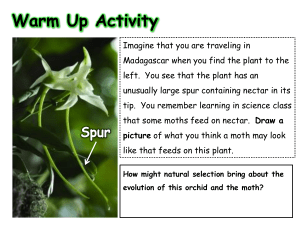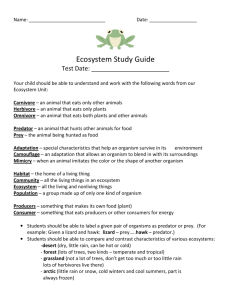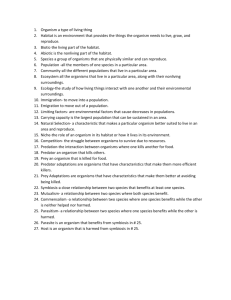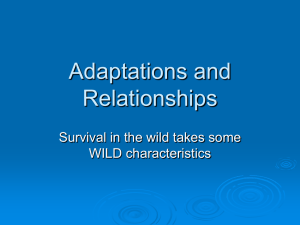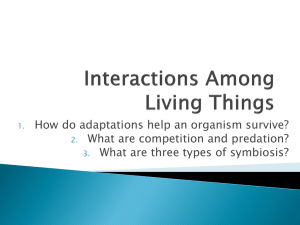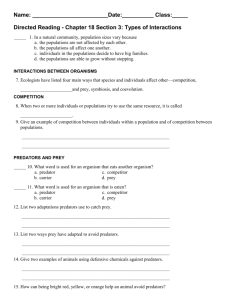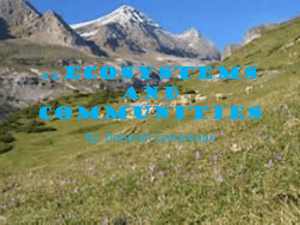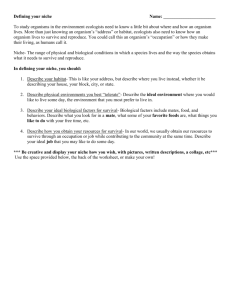Environmental Relationships and Intro. to Biomes with voc 2015
advertisement
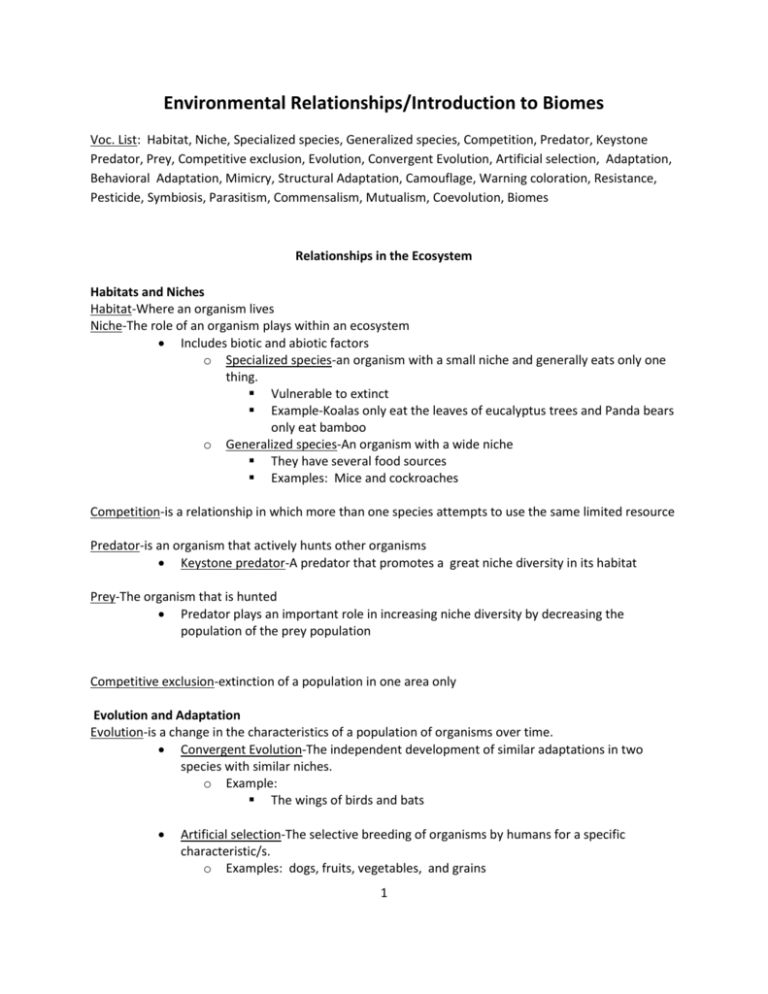
Environmental Relationships/Introduction to Biomes Voc. List: Habitat, Niche, Specialized species, Generalized species, Competition, Predator, Keystone Predator, Prey, Competitive exclusion, Evolution, Convergent Evolution, Artificial selection, Adaptation, Behavioral Adaptation, Mimicry, Structural Adaptation, Camouflage, Warning coloration, Resistance, Pesticide, Symbiosis, Parasitism, Commensalism, Mutualism, Coevolution, Biomes Relationships in the Ecosystem Habitats and Niches Habitat-Where an organism lives Niche-The role of an organism plays within an ecosystem Includes biotic and abiotic factors o Specialized species-an organism with a small niche and generally eats only one thing. Vulnerable to extinct Example-Koalas only eat the leaves of eucalyptus trees and Panda bears only eat bamboo o Generalized species-An organism with a wide niche They have several food sources Examples: Mice and cockroaches Competition-is a relationship in which more than one species attempts to use the same limited resource Predator-is an organism that actively hunts other organisms Keystone predator-A predator that promotes a great niche diversity in its habitat Prey-The organism that is hunted Predator plays an important role in increasing niche diversity by decreasing the population of the prey population Competitive exclusion-extinction of a population in one area only Evolution and Adaptation Evolution-is a change in the characteristics of a population of organisms over time. Convergent Evolution-The independent development of similar adaptations in two species with similar niches. o Example: The wings of birds and bats Artificial selection-The selective breeding of organisms by humans for a specific characteristic/s. o Examples: dogs, fruits, vegetables, and grains 1 Humans bred wolves over time to produce the dogs we have today. Humans are saving the seeds from the largest and sweetest fruits and the most nutritious grains. Then the farmers use those seeds to plant the next batch to insure they are going to get the best products. Adaptation- the ability to change to be able to live in an environment either by structural changes or actions Two types of adaptation o Behavioral-instinct or actions Examples: Mimicry-Harmless species having the same behavior of a species that has a chemical protection. Example: Harmless insect acting like a bee or a wasp Squirrels gathering acorns so it has food in the winter is an example of an action o Structural-bodily change Camouflage –disguising their recognizable features Example: In the winter time the Arctic hare has white hair to protect itself from predators Warning coloration-Alerts potential predators to stay away and protects the prey species from damage Examples: o Patterns with black stripes and red, orange, or yellow are common in several species of wasps, bees, snakes, skunks, and poisonous frogs Evolution of Resistance-unwanted Adaptations o Resistance-the ability of one or more organisms to tolerate a particular chemical designed to kill it. Examples: Plant diseases being resistance to pesticides (a chemical substance created to kill insects or other pest on plants) Bacterial and Fungal diseases becoming resistance to Antibiotics Symbiosis and Coevolution Symbiosis is the close permanent relationship between different species for survival. There are three types: 1. Parasitism– When one species benefits (parasite), and the other is harmed-the host Example: tick (parasite) on a dog (host) Parasites do not usually kill the host as it would leave them without a food source 2. Mutualism – When both species benefit from the relationship Example: ants and acacia tree 3. Commensalism – When one species benefits and the other is neither harmed or benefited Example: moss growing on trees) 2 Coevolution-The process where species that interact closely together adapt to each other’s existents and sometimes depend on one another for survival Examples: The acacia tree is benefited because the ants attack any organism (by either killing it or driving it away) that lands on the tree and the ant clears away the vegetation near by the tree so the tree can get the proper amount of sunlight. Hawaiian honeycreeper has a curved beak so it can retrieve the nectar of the lobelia flower and the flower gets pollinated during the process by the pollen being forced on the bird’s head from the last flower it visited 3
